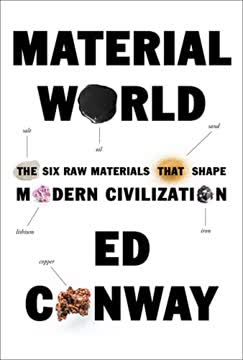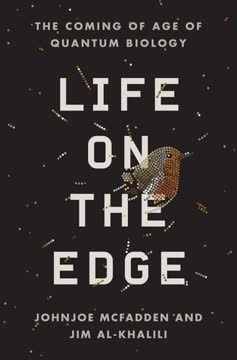نکات کلیدی
1. زندگی یک سیستم شیمیایی و اطلاعاتی شگفتانگیز است
"در نهایت، زندگی از قوانین نسبتاً ساده و بهخوبی درکشدهی جاذبه و دافعهی شیمیایی و ساخت و شکستن پیوندهای مولکولی پدیدار میشود."
پیچیدگی از سادگی. پیچیدگی فوقالعادهی زندگی از تعاملات شیمیایی بنیادی ناشی میشود. با وجود اینکه به نظر جادویی میرسد، زندگی از طریق اصول دقیق فیزیکی و شیمیایی که بهطور علمی قابل درک هستند، عمل میکند.
ویژگیهای کلیدی شیمی زندگی:
- ساختهشده از پلیمرهای کربندار
- قابلیت ذخیرهسازی و تبدیل اطلاعات
- توانایی خودسازماندهی و تولید مثل
- حفظ نظم داخلی در تعامل با محیط خارجی
معجزهی مولکولی. زیبایی زندگی در توانایی آن برای استفاده از پیکربندیهای مختلف پلیمرهای کربنی خطی برای تولید هم ذخیرهسازی اطلاعات پایدار و هم فعالیتهای شیمیایی متنوع نهفته است، که سیستمی را ایجاد میکند که همزمان ساده و عمیقاً پیچیده است.
2. سلولها واحدهای بنیادی زندگی هستند
"سلولها نه تنها واحد ساختاری پایهی تمام موجودات زنده هستند، بلکه واحد عملکردی پایهی زندگی نیز به شمار میروند."
پایههای سلولی. سلولها نمایانگر بلوکهای بنیادی زیستشناسی هستند و تمام ویژگیهای اصلی سیستمهای زنده را دارا میباشند. هر سلول یک دنیای زندهی کامل و پیچیده است که قادر به رشد، تولید مثل و عمل هدفمند است.
ویژگیهای سلولی:
- موجودات خودکفا با غشا
- قابلیت متابولیسم و پردازش اطلاعات
- تولید مثل از طریق تقسیم سلولی
- ارتباط با محیط خارجی
- حفظ نظم داخلی
پیچیدگی میکروسکوپی. میکروسکوپهای مدرن سلولها را بهعنوان شبکههای پیچیدهای از میکرو محیطهای شیمیایی سازمانیافته نشان میدهند که بسیار پیچیدهتر از واحدهای ساختاری ساده هستند. آنها ماشینهای دینامیک پردازش اطلاعات هستند که اصول بنیادی زندگی را تجسم میبخشند.
3. ژنها حاملان اطلاعات وراثتی بیولوژیکی هستند
"زندگی بدون ژنها نمیتواند وجود داشته باشد: هر نسل جدید از سلولها و موجودات باید دستورالعملهای ژنتیکی را که برای رشد، عملکرد و تولید مثل نیاز دارند، به ارث ببرد."
نقشهی ژنتیکی. ژنها بهعنوان مکانیزم ذخیرهسازی و انتقال اطلاعات زندگی عمل میکنند و دستورالعملهایی برای ساخت و نگهداری موجودات در طول نسلها را رمزگذاری میکنند. آنها نمایانگر یک سیستم اطلاعاتی بیولوژیکی بهطور شگفتانگیز پایدار و در عین حال قابل انطباق هستند.
ویژگیهای اطلاعات ژنتیکی:
- ذخیرهشده در مولکولهای DNA
- قابلیت تکثیر دقیق
- انتقال ویژگیهای وراثتی
- اجازهی تنوع از طریق جهشها
- ارائهی نقشهای برای توسعهی موجودات
اهمیت تکاملی. اطلاعات ژنتیکی امکان تداوم زندگی را فراهم میکند و در عین حال مکانیزمهایی برای انطباق و تغییر ارائه میدهد که تکامل را از طریق انتخاب طبیعی ممکن میسازد.
4. تکامل از طریق انتخاب طبیعی تنوع بیولوژیکی را به وجود میآورد
"تکامل از طریق انتخاب طبیعی جمعیتهایی از موجودات پیچیدهتر و متنوعتر را تولید کرده است... بدون اینکه هرگز از قوانین علم منحرف شود."
مکانیسم خلاق. انتخاب طبیعی یک فرآیند خلاقانه عمیق است که تنوع فوقالعادهی زندگی را بدون مداخلهی ماورایی تولید میکند. این فرآیند از طریق اصول بنیادی تنوع، وراثت و بقا انتخابی عمل میکند.
اصول انتخاب طبیعی:
- نیاز به تولید مثل
- نیاز به سیستم اطلاعات وراثتی
- نیاز به تنوع ژنتیکی
- انتخاب ویژگیهای سازگارتر
- تولید پیچیدگی فزاینده در طول زمان
زندگی متصل. تکامل نشان میدهد که تمام اشکال زندگی بهطور بنیادی مرتبط هستند و از یک خط نیاکان مشترک پدید آمده و بهطور مداوم به چالشهای محیطی سازگار میشوند.
5. شیمی قابلیتهای سازماندهی پیچیدهی زندگی را ممکن میسازد
"بیشتر جنبههای زندگی را میتوان بهخوبی از منظر فیزیک و شیمی درک کرد، هرچند که این یک شکل فوقالعاده از شیمی است که بهطور بسیار منظم و سازمانیافته است."
پایههای شیمیایی. فرآیندهای زندگی بهطور بنیادی شیمیایی هستند و شامل شبکههای پیچیدهای از واکنشها هستند که توسط آنزیمها کنترل میشوند و از طریق مکانیزمهای مولکولی پیشرفته سازماندهی میشوند.
ویژگیهای زندگی شیمیایی:
- متابولیسم بهعنوان اصل سازماندهی مرکزی
- واکنشهای کنترلشده توسط آنزیمها
- تعاملات مولکولی دقیق
- تبدیل انرژی
- تقسیمبندی فرآیندها
ماشینآلات مولکولی. سلولها مانند کارخانههای شیمیایی پیچیده عمل میکنند که در آن ماشینهای مولکولی وظایف تخصصی را با دقت و کارایی شگفتانگیز انجام میدهند.
6. پردازش اطلاعات در عملکرد بیولوژیکی مرکزی است
"پردازش اطلاعات در تمام جنبههای زندگی نفوذ دارد."
محاسبات بیولوژیکی. سیستمهای زنده بهطور مداوم اطلاعاتی را از محیطهای داخلی و خارجی جمعآوری، تفسیر و به آنها پاسخ میدهند و رفتار هدفمندی را از طریق مدیریت پیچیده اطلاعات نشان میدهند.
مکانیزمهای پردازش اطلاعات:
- تنظیم ژنتیکی
- مسیرهای سیگنالدهی سلولی
- انطباق با محیط
- تصمیمگیری هدفمند
- حافظه و یادگیری
سیستمهای اطلاعاتی مدولار. سیستمهای بیولوژیکی از ماژولهای اطلاعاتی متصل استفاده میکنند که پاسخهای انعطافپذیر و سازگار به شرایط متغیر را امکانپذیر میسازد.
7. دانش بیولوژیکی میتواند پتانسیل انسانی را متحول کند
"ما یک فرصت منحصر به فرد داریم تا از درک خود از زندگی برای تغییر جهان استفاده کنیم."
کاربردهای علمی. درک پیشرفتهی بیولوژیکی امکان مداخلات انقلابی در بهداشت، کشاورزی، مدیریت محیط زیست و نوآوریهای فناوری را فراهم میآورد.
حوزههای پتانسیل تحولآفرین:
- درمانهای پزشکی
- مهندسی ژنتیک
- کاهش تغییرات اقلیمی
- تولید غذا
- پیشگیری از بیماری
نوآوری مسئولانه. پیشرفت علمی باید با ملاحظات اخلاقی و درک جامع از پیامدهای بالقوه متوازن شود.
8. درک زندگی نیازمند دیدگاه بینرشتهای است
"زیستشناسی بهطور فزایندهای به کمک دانشمندان در رشتههای دیگر، مانند ریاضیدانان، دانشمندان کامپیوتر و فیزیکدانان نیاز خواهد داشت."
رویکرد جامع. درک پیچیدگی زندگی نیازمند تحقیقاتی مشترک و بینرشتهای است که چندین دیدگاه علمی را ادغام کند.
همکاری بینرشتهای:
- زیستشناسی مولکولی
- علم کامپیوتر
- فیزیک
- ریاضیات
- فلسفه
تفکر در سیستمهای پیچیده. درک زندگی نیازمند فراتر رفتن از رویکردهای کاهشگرایانه و پذیرش روشهای سیستمی و یکپارچه است.
9. ملاحظات اخلاقی در کاربردهای بیولوژیکی حیاتی است
"بحثها دربارهی منافع عمومی باید بر اساس دانش، شواهد و تفکر منطقی هدایت شود و نه بر اساس ایدئولوژی، باورهای غیرمستند، طمع یا افراطهای سیاسی."
علم مسئولانه. نوآوریهای بیولوژیکی باید از طریق چارچوبهای اخلاقی دقیق ارزیابی شوند که پیامدهای بالقوه اجتماعی و محیطی را در نظر میگیرند.
ملاحظات اخلاقی:
- حریم خصوصی ژنتیکی
- دسترسی عادلانه به درمانها
- پیامدهای محیطی
- احتمال سوءاستفاده از فناوریها
- اثرات سیستماتیک بلندمدت
گفتگوی شفاف. بحثهای باز و مبتنی بر شواهد که شامل دانشمندان، سیاستگذاران و عموم مردم میشود، برای نوآوری بیولوژیکی مسئولانه ضروری است.
10. زندگی بهطور بنیادی متصل و هدفمند است
"تمام افراد به هر شکل زندگی در سیاره مرتبط هستند."
وحدت اکولوژیکی. اشکال زندگی بهطور عمیق به هم متصل هستند و ویژگیهای شیمیایی و اطلاعاتی بنیادی را در میان گونههای مختلف به اشتراک میگذارند.
اصول ارتباط متقابل:
- میراث ژنتیکی مشترک
- وابستگی اکولوژیکی
- مکانیزمهای تکاملی مشترک
- تأثیر متقابل بر محیط
- پیچیدگی سیستماتیک
چشمانداز سیارهای. درک ارتباط متقابل زندگی رویکردهای جامعتری را برای مدیریت محیط زیست و حفاظت از گونهها ترویج میکند.
آخرین بهروزرسانی::
FAQ
What's "What Is Life?: Five Great Ideas in Biology" about?
- Exploration of Life's Definition: The book delves into the fundamental question of what it means to be alive, exploring the complexity and diversity of life on Earth.
- Five Key Biological Ideas: Paul Nurse presents five central concepts in biology: The Cell, The Gene, Evolution by Natural Selection, Life as Chemistry, and Life as Information.
- Interconnectedness of Life: It emphasizes the interconnectedness of all living organisms and how these ideas help us understand life's processes.
- Scientific and Personal Journey: The book combines scientific insights with personal anecdotes from the author's life and career in biology.
Why should I read "What Is Life?: Five Great Ideas in Biology"?
- Comprehensive Overview: It provides a comprehensive overview of the fundamental principles of biology, making it accessible to both novices and those with a background in science.
- Insightful Perspectives: The book offers insightful perspectives on how life functions and the scientific discoveries that have shaped our understanding.
- Relevance to Modern Issues: It discusses the implications of biological knowledge on current global challenges, such as climate change and healthcare.
- Engaging Narrative: Paul Nurse's engaging narrative style makes complex scientific concepts understandable and relatable.
What are the key takeaways of "What Is Life?: Five Great Ideas in Biology"?
- Five Biological Concepts: Understanding the cell, gene, evolution, chemistry, and information are crucial to comprehending life.
- Interconnectedness and Evolution: All life forms are interconnected through evolution, sharing a common ancestry and genetic makeup.
- Life as Chemistry and Information: Life is a complex interplay of chemical reactions and information processing, which allows organisms to function and adapt.
- Scientific Responsibility: The book highlights the responsibility of scientists and society to use biological knowledge ethically and sustainably.
How does Paul Nurse define life in "What Is Life?: Five Great Ideas in Biology"?
- Three Principles of Life: Life is defined by the ability to evolve through natural selection, being a bounded physical entity, and functioning as a chemical, physical, and informational machine.
- Evolutionary Capability: The ability to reproduce, have a hereditary system, and exhibit variability is essential for evolution.
- Physical and Informational Nature: Life forms are physical entities that manage information to maintain and reproduce themselves.
- Chemical Complexity: Life's chemistry is based on large carbon-based polymers, which store information and perform diverse functions.
What is the significance of "The Cell" in "What Is Life?: Five Great Ideas in Biology"?
- Basic Unit of Life: The cell is described as the fundamental structural and functional unit of all living organisms.
- Cell Theory: The book explains cell theory, which states that all living things are composed of cells, and cells are the simplest entities that can be considered alive.
- Diversity and Commonality: While cells vary greatly in size and function, they share common features that define life.
- Role in Growth and Repair: Cells are responsible for growth, repair, and reproduction, making them central to understanding life processes.
How does "The Gene" contribute to our understanding of life in "What Is Life?: Five Great Ideas in Biology"?
- Inheritance and Variation: Genes are the key to understanding inheritance and the variation observed in living organisms.
- Mendel's Discoveries: The book discusses Gregor Mendel's pioneering work on inheritance, which laid the foundation for modern genetics.
- DNA as Genetic Material: It explains how DNA encodes genetic information and how this information is passed on through generations.
- Genetic Code and Proteins: The genetic code is translated into proteins, which perform essential functions in cells and organisms.
What role does "Evolution by Natural Selection" play in "What Is Life?: Five Great Ideas in Biology"?
- Mechanism of Diversity: Evolution by natural selection is presented as the process that generates the diversity of life forms.
- Darwin's Contribution: The book highlights Charles Darwin's role in developing the theory of natural selection and its impact on biology.
- Adaptation and Survival: Natural selection explains how organisms adapt to their environments and how new species arise.
- Interconnectedness of Life: It emphasizes that all life is connected through evolutionary history, sharing common ancestors.
How is "Life as Chemistry" explained in "What Is Life?: Five Great Ideas in Biology"?
- Chemical Reactions in Life: Life is described as a series of complex chemical reactions that sustain living organisms.
- Role of Enzymes: Enzymes are crucial for catalyzing the chemical reactions that make up metabolism.
- Carbon-Based Polymers: The book explains how carbon-based polymers, like DNA and proteins, are central to life's chemistry.
- Order from Chaos: Life's chemistry creates order from chaos, allowing organisms to maintain structure and function.
What does "Life as Information" mean in "What Is Life?: Five Great Ideas in Biology"?
- Information Processing: Life is viewed as an information-processing system, where organisms gather, store, and use information to survive.
- Genetic Information: DNA stores genetic information, which is used to build and regulate living organisms.
- Gene Regulation: The book discusses how gene regulation allows cells to respond to changes and maintain homeostasis.
- Purposeful Behavior: Information management enables organisms to act with purpose, adapting to their environments.
What are the best quotes from "What Is Life?: Five Great Ideas in Biology" and what do they mean?
- "Life is a chemical, physical, and informational machine." This quote encapsulates the book's view of life as a complex system that integrates chemistry, physics, and information.
- "We are bound by a deep connectedness to all other life." It highlights the interconnectedness of all living organisms through shared evolutionary history and ecological relationships.
- "The universe is unimaginably vast... life as it is on Earth today started just once." This emphasizes the uniqueness and singular origin of life on Earth, despite the vastness of the universe.
- "It is only through death that there can be life." This reflects the role of natural selection in driving evolution and the continuous cycle of life and death.
How does Paul Nurse's personal journey influence "What Is Life?: Five Great Ideas in Biology"?
- Early Fascination with Biology: Nurse's childhood curiosity about a butterfly sparked his lifelong interest in biology.
- Scientific Career: His experiences as a geneticist and cell biologist provide a personal perspective on the scientific discoveries discussed in the book.
- Research Contributions: Nurse shares insights from his research on cell cycle control, which has implications for understanding cancer and other diseases.
- Philosophical Reflections: His personal journey informs his reflections on the ethical and societal implications of biological knowledge.
What are the implications of "What Is Life?: Five Great Ideas in Biology" for the future?
- Healthcare Advancements: The book discusses how biological knowledge can lead to new treatments for diseases and improve healthcare.
- Environmental Challenges: It highlights the role of biology in addressing global challenges like climate change and biodiversity loss.
- Ethical Considerations: The book raises ethical questions about genetic engineering, synthetic biology, and the use of biological knowledge.
- Interdisciplinary Collaboration: It emphasizes the need for collaboration between scientists, policymakers, and society to address complex biological issues.
نقد و بررسی
کتاب "زندگی چیست؟" به بررسی مفاهیم بنیادی زیستشناسی از طریق پنج ایده کلیدی میپردازد: سلولها، ژنها، تکامل، شیمی و اطلاعات. این کتاب که توسط برنده جایزه نوبل، پل نرس، نوشته شده است، نمایی قابل دسترس از پیچیدگیهای زندگی، از عملکردهای سلولی تا وراثت ژنتیکی، ارائه میدهد. در حالی که برخی از خوانندگان آن را روشنگر و بهخوبی نوشته شده میدانند، دیگران احساس کردند که عمق یا اصالت کافی ندارد. نقاط قوت این کتاب در توضیحات واضح و داستانهای شخصی نهفته است، هرچند برخی به توزیع نامتوازن اطلاعات و رویکرد سادهانگارانهاش به موضوعات پیچیده انتقاد کردهاند. بهطور کلی، این کتاب بهعنوان یک مقدمه محکم برای زیستشناسی برای خوانندگان عمومی عمل میکند.
Similar Books












